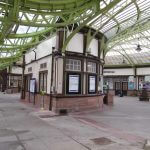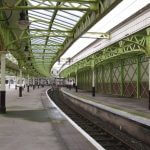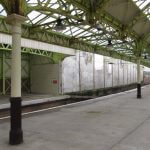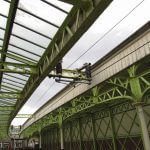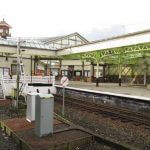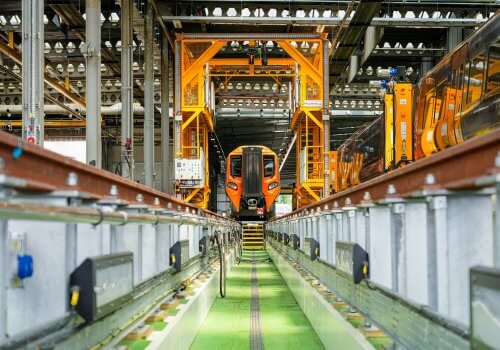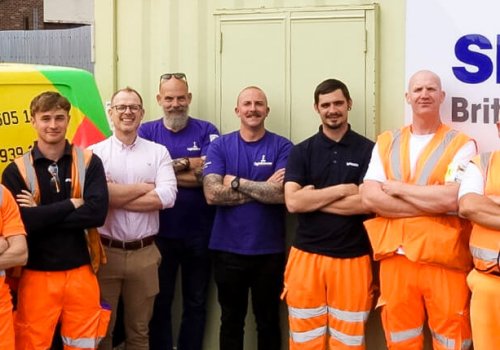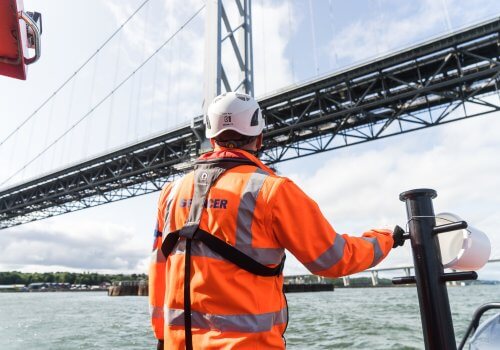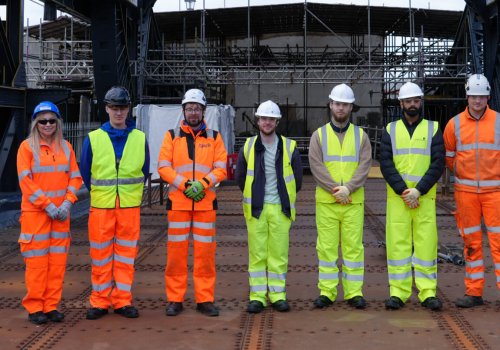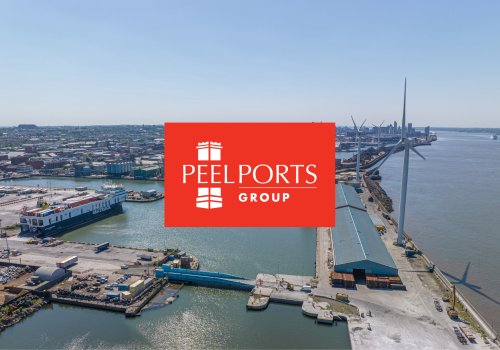Spencer Group is currently undertaking a series of delicate refurbishment works at a 100-year-old station in Scotland.
The group’s on site team is required to deliver a series of works including the refurbishment of platform canopies, refurbishment of the concourse roof and installation of a new access system to canopies as well as both external and internal miscellaneous building works.
The project was originally to be delivered over two financial years to take advantage of two summer periods and ensure tools could be downed during the winter periods due to the marine environment of the stations and the impact of cold weather on painting works.
However, following inspections carried out during the works, the team was faced with a number of unforeseen challenges.
The station canopy is glazed with Georgian wire and has suffered from water ingress and a lack of maintenance due to poor access. As well as this the current paint system is failing and rust can be seen throughout.
Almost 100 per cent of the existing slates were classified as unsuitable for the station’s coastal environment and needed replacing. A post-contract-award structural assessment also revealed significant overstressing in the existing structural members, requiring a substantial strengthening variation to be added to the package.
Further testing to remote areas of the roof revealed that existing lead coatings are still in place at some locations. As a result of this testing, it was determined that these require significant refurbishment.
To overcome these challenges, the team had to adapt the working programmes and work through the winter period, implementing measures to maintain environmental conditions within the encapsulated painting zones. The project remains on course for completion prior to the winter of 2015/16.
Spencer project manager David Field is overseeing operations on the Wemyss Bay Station Canopy Refurbishment project.
“As with any structure more than a century old, once starting work to restore certain aspects we uncovered other items,” he said.
“These issues have significantly impacted the contract programme but, through working closely with the client, we have implemented a permanent earthed section to one of the platforms, which means we will be closing one of the tracks to trains and, in effect, having isolation for an extended duration. This will allow certain activities to be undertaken safely as a daytime operation.”
Further checks also revealed the Back to Back Angles have never been fully blasted but contain lead paint. Subsequently, the client has instructed Spencer to remove the lead paint.
Despite the challenges, Spencer’s team is continuing to make good progress.
David said: “Working on such an old station that is positioned on the coast and open to the elements has presented a number of challenges for the onsite team, ones that are not often faced on project sites. The biggest challenge we have on a daily basis is ensuring the multiple trades have safe segregated work areas as well as having continuity of works to maintain progress.
“Heavy rain and high winds throughout December and January have significantly impacted progress to the roofing works and the high-risk activities such as working at height, blasting and working in a live station environment requires staff to be diligent at all times in terms of safety.
“Having to work through the winter in sub-zero temperatures is tough but the team is sticking to the task well. Hopefully, we will be able to get ahead of the scheduled programme of works this year and be complete before next winter.”
Works complete to date include all car park canopy roofing works as well as the scaffold and encapsulation to the canopy.
Spencer has now begun roofing works on Platform 1 and Platform 2 and scaffold erection on Platform 0, 1 and 2 is well underway. Blasting and painting works are progressing well within the car park canopy.
The remaining works include installation of a new access system to the canopies, refurbishment of the concourse roof, other miscellaneous building works, both internally and externally, and the added actions on the back of inspections completed after works began, as outlined above.
Wemyss Bay Station in Inverclyde is a Listed Building designed by James Miller in 1903 for the Caledonian Railway. It incorporates the Caledonian MacBrayne ferry terminal, connecting mainland Scotland to Rothesay on the Isle of Bute.
Spencer will continue to consult with community group ‘The Friends of Wemyss Bay Station’ to update them on the works throughout the project.
